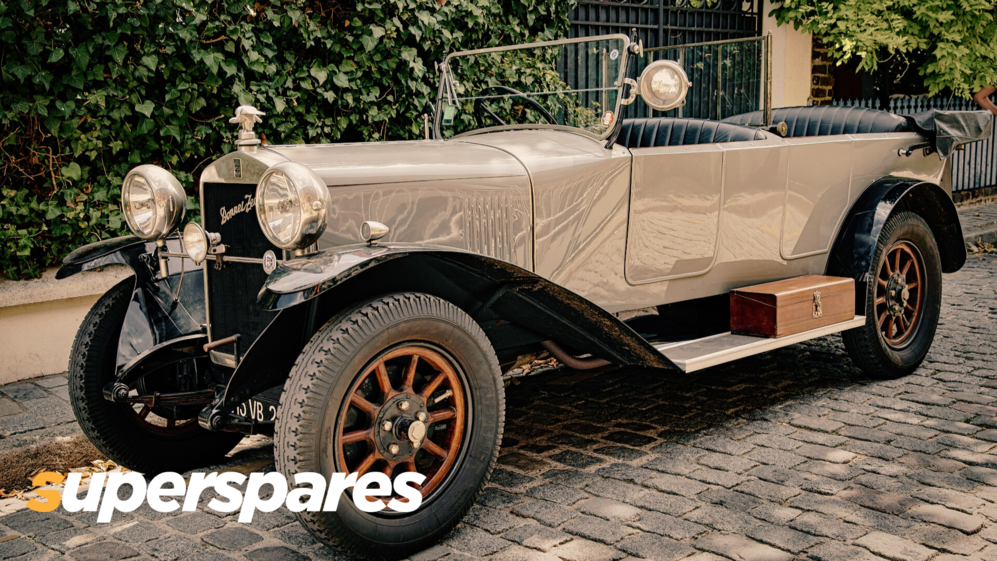Antique Car Parts Buying Guide

Restoring an antique car takes lots of time, energy, patience, and money. The garage is transformed from a place to park the family steed into a combination operating room and workshop. Read on to learn about the most important considerations when restoring an antique vehicle and shopping for antique car parts in order to find those golden flecks needed to turn one's frustrating garage project into a moving work of art.
What Level Of Restoration Do You Prefer?
Before starting an antique or classic car restoration project, you have to decide what level of restoration you prefer. True antique and classic car enthusiast expect the car to be restored to like-new condition.
How To Use Available Resources?
Antique car clubs are great resources for finding information about parts, parts suppliers, parts manufacturers, and the original equipment that was on a car. Many of these groups are networked together and have collected documentation about these old cars. Some of this information is readily available to anyone, while other documentation may need to be purchased. If possible, buying a service manual,also they are not available for all antique cars, but some enterprising restorers have created them, based upon their own experience. Manufacturer parts manuals, although rare, are also extremely useful.We supply some auto part for classic models, such as Holden Commodore ,etc.
A Word About Words
There are several different terms used in the antique/classical/vintage car. These terms are important to understand so that one knows what one is looking at when shopping for parts.
|
Term
|
Definition
|
|
OEM
|
Stands for "original equipment manufacturer"; defines a part as being the same as that originally used by the manufacturer, meaning it is made to the same manufacturer specifications, by the same manufacturer that made the originals |
|
NOS
|
Stands for "new old stock"; used to describe parts that have never been used, but have been kept in a warehouse for years |
|
USED
|
A part that has been previously bolted to a vehicle; may have been used a little or often |
|
Refurbished
|
A part that has been reworked to be useable; may not be reworked to original specifications, but rather, to a useable condition |
|
Restored
|
A part that has been reworked to make it like new; should meet the original specifications for both function and appearance |
|
Reproduction
|
A new part that has been made to be as exact a copy of the original part as possible, using the same materials and finish |
|
Copy
|
A new part that looks like the original, but may differ in materials, function, or finish |
What Is Needed To Be Restored?
As the project progresses, many parts encountered may need to be replaced, repaired, or remanufactured. Many restorers are constantly on the lookout for vehicles like the one they are working on that are being "parted out." When they encounter one, they try to buy all the parts they can from their list. In these cases, the list is invaluable, reminding the restorer of the parts they need for their project.
Some parts need to be new, while others can be used. Functional parts which wear through use, often referred to as "maintenance parts," must be replaced by new parts. Things like spark plugs must be purchased new. Fortunately, aftermarket versions of most of these parts are made.
Durable parts are usually not as easily encountered as maintenance parts. Body panels, glass, turn signals, structural components, major engine components, trim pieces, and suspension members are much harder to find. In many cases, the best that can be found are used parts that need to be restored.
How To Determine the Condition of the Parts?
In many cases, the parts that are employed are used parts that have been worked over to restore them. When shopping for used parts, it is important to know what one is looking at. Most sellers leave the part "as is," showing any rust and damage to interested buyers. This is beneficial for the buyer, as they get a better idea of the condition of the part.
The seller should clearly state the condition of the part and whether it is OEM, refurbished, a reproduction, etc. If they have not done so, be sure to ask, as this is important information in determining whether the part will work for the project.
Often, trim pieces, such as headlight rings, grilles, and hubcaps, need to be re-chromed. This process deposits new chrome plating to replace the old. If a part is bought that should be chrome plated, but it has flaking chrome on it, the chrome should be removed and the part sanded smooth. If necessary, remove any dents and fill any pits in the surface.
Conclusion
Finding the right parts to restore an antique car can be the most challenging part of an antique car restoration project. The local auto parts store is not likely to have much of what is needed, other than a few high-maintenance parts. For any durable parts, the search can be long and grueling.
When buying parts for a restoration project, it is important to be sure to fully understand what is being sold. Many parts exist that are replacements for the original, rather than being original equipment parts. While it may be necessary to use these replacements, especially if the originals cannot be found, one should be sure of what they are buying and what they are installing on their restoration.


